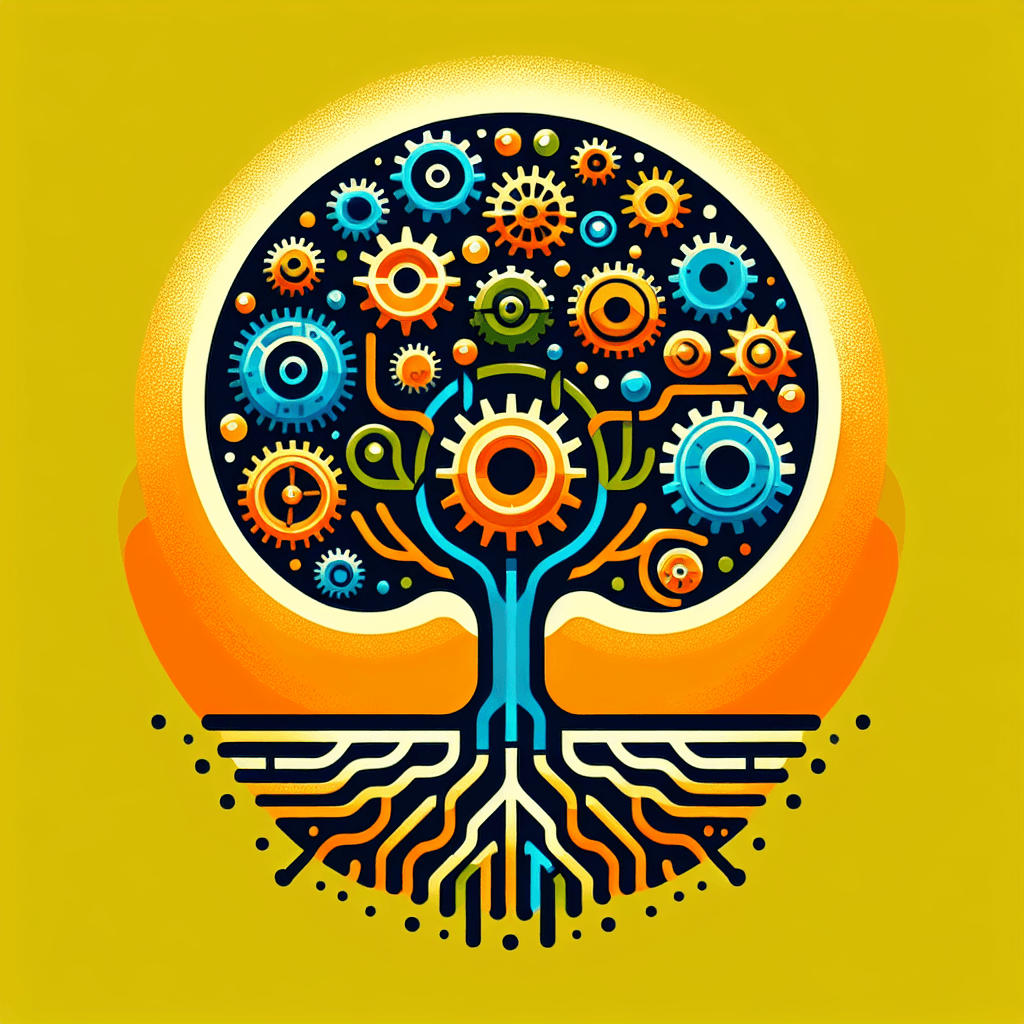Table of Contents
In today’s fast-paced work environment, cultivating a growth mindset at work can be the key to unlocking your full potential. Many professionals are discovering the power of viewing challenges as opportunities to learn and grow.
By shifting your focus from simply achieving outcomes to valuing the effort and progress toward your goals, you can foster a more enriching and productive career.

Developing a growth mindset at work involves embracing continuous learning and adapting to new situations with resilience. This mindset not only enhances personal development but also contributes significantly to a positive workplace culture.
By actively seeking feedback and prioritizing skill development, you can transform obstacles into stepping stones for success.
Engaging with your colleagues in a collaborative manner further promotes a culture where knowledge sharing and innovation thrive. As you continue to pursue growth, you will find that the journey itself becomes a rewarding experience, filled with opportunities for both personal and professional advancement.
Key Takeaways
- Growth mindset at work transforms challenges into learning opportunities.
- Continuous development fosters resilience and success.
- Collaboration and feedback enhance workplace culture.
Understanding Growth Mindset

A growth mindset at work involves embracing challenges, persisting in the face of setbacks, and seeing effort as a path to mastery. Understanding how this mindset contrasts with a fixed mindset and recognizing Carol Dweck’s contributions to its development is essential.
Defining Growth Mindset
A growth mindset is the belief that abilities and intelligence can be developed through dedication and hard work. This view fosters a love for learning and resilience. It emphasizes the process rather than the innate talents or intelligence.
In a work setting, this mindset encourages innovation and creativity. It promotes the idea that skills can be learned and improved. Individuals with a growth mindset see potential for growth and actively seek opportunities to enhance their abilities.
Growth vs. Fixed Mindset
A fixed mindset, on the other hand, is characterized by the belief that intelligence and talents are static traits. People holding this view may avoid challenges that could lead to failure, fearing it as a reflection on their inherent abilities.
In contrast, a growth mindset thrives on challenges and views failure as a springboard for development. At work, this means being more open to feedback and criticism, using them as tools for self-improvement rather than personal affronts.
The Research of Carol Dweck
Carol Dweck, a prominent psychologist, significantly contributed to the understanding of growth and fixed mindsets. Her research laid the groundwork for recognizing how our beliefs about intelligence influence behavior and performance. Dweck’s work emphasizes self-awareness in identifying one’s own mindset.
Her studies show that adopting a growth mindset at work leads to greater success and fulfillment. By understanding her research, you can better appreciate how shifting mindsets can transform personal and professional growth. This perspective has been widely adopted in workplaces to improve motivation and productivity.
Importance in the Workplace

Cultivating a growth mindset in the workplace drives innovation, enhances adaptability, and strengthens collaboration. It empowers employees to embrace change, improve processes, and work more effectively as teams. This mindset nurtures leadership qualities by encouraging continuous learning and resilience in the face of challenges.
Fostering Innovation
Incorporating a growth mindset at work into your workplace fosters a culture of innovation. When employees believe in their ability to develop and improve, they are more likely to experiment and take risks. This openness leads to new ideas driving the business forward.
Encouraging this mindset means supporting brainstorming sessions and creative problem-solving. Managers that empower teams to think outside the box and view mistakes as learning opportunities see higher engagement and breakthrough solutions. Continuous improvement becomes part of daily operations.
Adaptability and Resilience
Adopting a growth mindset at work enhances your organization’s adaptability and resilience. An environment that supports change and learning helps employees better handle disruptions and challenges. They approach difficulties as opportunities for growth rather than insurmountable problems.
Leaders should emphasize flexibility and resourcefulness in unpredictable times. Employees with a growth mindset at work may adjust their strategies quickly, harnessing setbacks into stepping stones for success. This adaptability is crucial in maintaining competitiveness in today’s fast-paced business environment.
Collaboration and Leadership
A growth mindset at work strengthens collaboration and leadership within teams. It encourages a culture where feedback is seen as a tool for growth and development, rather than criticism. This approach fosters open communication and strengthens professional relationships.
In leadership, those with a growth mindset at work promote inclusivity and shared goals. Leaders showing openness to learning and humility inspire their teams, creating a unified, purpose-driven workforce. They drive team performance by valuing each member’s contributions and encouraging continued personal and professional development.
Learning From Challenges

Developing a growth mindset at work often involves leveraging challenges. By viewing obstacles as opportunities for learning, you can transform mistakes into valuable experiences.
Embracing Challenges
Facing challenges at work can push you beyond your comfort zone. By embracing these challenges, you gain the courage to cross into unfamiliar territory, which fosters growth.
Recognize that stepping out of your comfort zone is essential for discovering new skills and capabilities. Such experiences allow you to test your resilience, adaptability, and creativity.
This mindset encourages the development of long-term competencies and a willingness to tackle future challenges. By maintaining a proactive approach, challenges become less daunting and more manageable, ultimately bolstering your confidence.
Learning Opportunities Through Failure
Seeing failures as learning opportunities is crucial for personal and professional growth. Each failure is an occasion to reflect on what went wrong and why. This reflection aids in identifying the gaps in your knowledge or skills, which can then be addressed effectively.
Adopting this perspective helps in minimizing the fear of failure, which often leads to a more experimental and innovative approach. When you view failures as steps in the learning process, it becomes easier to pivot, adapt, and improve your strategies for future success.
Redefining Mistakes
Mistakes are not merely errors but a part of the learning process. Redefining mistakes involves changing how you perceive them, viewing them as opportunities to improve rather than setbacks.
Analyze mistakes to understand their root causes and take corrective actions. This process enhances your problem-solving skills and supports a culture of continuous improvement.
By encouraging open discussion about mistakes within your team, you create an environment where learning from errors becomes accepted and appreciated, ultimately driving collective growth.
Continuous Development
Continuous development in the workplace requires a proactive approach to learning and skill enhancement. It involves an unwavering focus on fostering a mindset that embraces challenges and new opportunities.
By emphasizing continuous learning, setting ambitious yet achievable stretch goals, and prioritizing personal development through upskilling, you can consistently advance in your career.
Emphasis on Continuous Learning
Continuous learning is a cornerstone of personal and professional growth. Engaging in lifelong learning enables you to adapt to industry changes and acquire new skills.
This involves actively seeking out educational resources, such as online courses, workshops, or seminars. By doing so, you ensure that your knowledge remains up-to-date, and you become more versatile in your role.
Encouraging a culture of learning within your team also promotes shared knowledge and innovation, ultimately benefiting the organization as a whole.
Setting Stretch Goals
Setting stretch goals pushes you beyond your comfort zone and encourages continuous development. These goals should be challenging yet attainable, requiring creative problem-solving and perseverance.
By setting and working towards these goals, you hone your skills and increase your resilience. It’s important to regularly assess your progress and adjust your goals as needed.
Celebrating small achievements along the way keeps you motivated and committed to your growth journey.
Upskilling and Personal Development
Upskilling refers to the process of acquiring new abilities and improving existing ones to keep pace with industry demands.
Investing in your personal development not only enhances your career prospects but also makes you a more valuable asset to your organization.
This can include earning certifications, attending industry conferences, or learning new technologies. By dedicating time to upskilling, you ensure that you are well-prepared to tackle future challenges and seize emerging opportunities.
Cultivating a Growth Mindset at work
Cultivating a growth mindset at work involves actively seeking constructive feedback, leveraging diverse perspectives, and fostering an environment conducive to continuous learning and development. The key is to embrace challenges and view effort as a pathway to improvement.
Seeking and Applying Feedback
Embracing feedback is critical in developing a growth mindset at work. Actively seek out feedback from peers and supervisors to gain insights into your strengths and areas for improvement.
Constructive criticism should be welcomed, as it provides specific information on how you can enhance your skills and performance. Incorporate the feedback into your daily work to make meaningful progress.
Regularly implementing feedback helps you adjust your strategies and achieve your goals more effectively. It fosters an ongoing cycle of growth and self-improvement, which is fundamental to a growth-oriented workplace.
Leveraging Diversity
Diversity in the workplace introduces a variety of perspectives, which can be a powerful catalyst for cultivating a growth mindset at work. Engage with colleagues from different backgrounds to gain a broader understanding of complex issues.
Diverse perspectives encourage you to think beyond your own experiences, fostering innovation and creativity. This approach can challenge your thinking and lead to new solutions.
Encouraging open dialogue and inclusivity in the workplace can lead to more comprehensive decision-making processes and foster a growth-oriented culture where all voices are valued.
Creating a Learning Environment
Creating a learning environment is essential for developing a growth mindset at work. Encourage curiosity and continuous learning by participating in training sessions and workshops.
Support should be given to employees to explore new skills and knowledge areas, reinforcing the idea that learning is a lifelong process. This environment enables individuals to experiment and learn from their successes and failures.
Develop initiatives that promote skill development and provide resources that facilitate learning. This kind of support helps in nurturing a resilient mindset, making the organization adaptive and forward-thinking.
Practical Strategies at Work
To foster a growth mindset at work, engaging in coaching and mentorship, practicing self-reflection, and building supportive systems can be effective. Each strategy focuses on developing sustained learning, resilience, and personal growth.
Coaching and Mentorship
Coaching and mentorship are invaluable for cultivating a growth mindset at work. Through coach-led sessions, you receive guidance tailored to your personal and professional development goals. Mentors can help broaden your perspective by offering insights from their experiences, reminding you that challenges are stepping stones to growth.
Regular interactions with mentors encourage you to look beyond immediate tasks, fostering a culture of continuous learning. Establishing a structured program for this can enhance commitment and ensure valuable knowledge sharing across all levels.
Consider creating peer coaching circles for additional support and diverse advice within the workplace community.
Incorporating Self-Reflection
Self-reflection enables you to evaluate your own learning processes, understand past mistakes, and recognize achievements. Allocate regular time for introspection—weekly or monthly reviews can be effective in understanding patterns and identifying areas needing improvement.
Journaling is a practical tool in self-reflection. By writing down your thoughts, you clarify ideas and develop greater awareness of your mindset. Set specific goals based on your reflections to guide your development journey.
Pair self-reflection with feedback sessions to gain external perspectives that challenge your thinking and expand your approach.
Building Supportive Systems
Supporting a growth mindset at work requires an infrastructure that encourages proper habits and interactions. Implement systems that facilitate open communication and regular feedback to build an inclusive atmosphere.
Encourage participation in workshops and training sessions that emphasize development and learning.
Create platforms for knowledge sharing, such as seminars or online forums, to help employees learn from each other’s experiences.
Establish a reward system that values effort and progress rather than just outcomes. Recognizing small, incremental improvements reinforces the idea that sustained effort leads to meaningful growth.
Overcoming Obstacles
Developing a growth mindset at work involves tackling various obstacles such as risk-taking, fear of failure, and a fixed mindset. By cultivating persistence and grit, you can navigate these challenges effectively and foster a more resilient approach to work.
Risk-Taking and Fear of Failure
Risk-taking is essential in any work environment, enabling innovation and progress. It’s crucial to recognize that fear of failure can impede your willingness to take risks.
To address this, you should embrace failure as a learning opportunity rather than a setback. When you view challenges as a natural part of the learning process, you create a more supportive atmosphere for innovation.
Encourage yourself to step out of your comfort zone by setting small, manageable goals that push your limits. Reflect on past experiences where taking risks led to growth, reinforcing the value of facing fears head-on.
Combatting the Fixed Mindset
A fixed mindset is characterized by the belief that skills and intelligence are static. Combatting this requires a shift in perspective.
Embrace the idea that abilities can be developed over time with dedication and effort. Self-awareness is vital; start by identifying any limiting beliefs that hold you back.
Challenge these beliefs by seeking new experiences and feedback. Engage in continuous learning through workshops, reading, and collaboration with peers.
Make it a habit to celebrate progress, focusing on effort and learning rather than results. This approach not only breaks down fixed mindset barriers but also fosters a more dynamic and adaptable work environment.
Persistence and Grit
Persistence and grit are key in overcoming challenges at work. Grit involves maintaining passion and perseverance for long-term goals even when facing setbacks.
Cultivating this resilience requires dedication to your objectives. Begin by clearly defining your goals and breaking them into smaller, actionable steps.
Maintain focus on your progress and adjust strategies as needed. Celebrate small victories to sustain motivation and keep momentum.
Regularly remind yourself of the bigger picture and the reasons behind your goals, which can help bolster persistence during tough times. By developing grit, you enhance your ability to withstand hardships and keep pushing forward in pursuit of growth.
Measuring Progress
Measuring progress in developing a growth mindset at work involves examining personal growth, understanding the learning curve, and recognizing the impact on performance. This process helps ensure that you make tangible improvements on your journey.
Assessing Personal Growth
Identifying personal growth means evaluating changes in your skills, mindset, and resilience over time. Keep a reflective journal to document your experiences, challenges faced, and how you’ve overcome them.
This practice helps in understanding the journey you have taken and areas that still need development.
Self-assessment tools, like surveys or personal insights, can guide you in recognizing progress. Regular feedback from peers offers diverse perspectives on your growth, providing a comprehensive view of your journey.
Evaluating the Learning Curve
The learning curve in cultivating a growth mindset at work highlights the rate at which you acquire new skills and knowledge. Track your skill development against your initial objectives.
Set specific metrics to measure your progress, such as the speed and efficiency of mastering new concepts.
Analyze areas where you improve quickly versus those where progress is slower. Use this awareness to adjust your strategies, enhancing your ability to adapt and learn.
Recognizing the Impact on Performance
The impact of a growth mindset on performance is evidenced by your achievements and workplace contributions. Compare your past and present performance metrics to identify improvements in productivity and innovation.
Increased adaptability and problem-solving abilities are signs of effective growth mindset at work development. Maintain a record of successful projects, collaborations, and learning experiences. This documentation highlights the ongoing impact of your mindset shift on work performance and career development.
Frequently Asked Questions
Developing a growth mindset at work involves deliberate strategies, practical actions, and ongoing support to enhance personal and professional growth. This mindset fosters collaboration, drives innovation, and presents certain challenges that can be effectively managed.
What strategies can be implemented to cultivate a growth mindset at work in an organizational setting?
Implement training programs that focus on personal development and resilience. Encourage employees to set learning goals, embrace challenges, and view mistakes as learning opportunities.
Create a supportive environment where feedback is normalized and seen as a tool for improvement.
In what ways does a growth mindset at work contribute to professional development and career advancement?
A growth mindset enhances adaptability and persistence, which are crucial for tackling new challenges. Employees with this mindset are more likely to pursue continuous learning and skill development, leading to better teamwork and increased opportunities for career progression.
How can employers encourage and support a growth mindset among their employees?
Employers can provide resources such as workshops and mentorship programs. Recognizing and rewarding efforts towards learning and improvement rather than just focusing on results can foster a culture of growth.
Open communication and support from leadership play a key role.
What are the potential challenges when shifting towards a growth mindset at work, and how can they be overcome?
Employees may resist change due to fear of failure or skepticism about new approaches. Address these hurdles with clear communication, highlighting the benefits of a growth mindset at work.
Providing role models and success stories can help in overcoming these challenges.
Can you provide practical daily actions that help in nurturing a growth mindset in the workplace?
Encourage daily reflection on work experiences to identify learning points. Set small, achievable goals that push comfort zones gradually.
Foster an environment that values questions and curiosity, enabling team members to explore new ideas and perspectives regularly.
How does fostering a growth mindset at work within teams impact collaboration and innovation?
Teams embracing a growth mindset are more likely to experiment and innovate, as they view setbacks as learning steps.
This mindset fosters open dialogue, leading to more effective problem-solving and creative solutions.
Collaborative efforts are enhanced as team members feel more valued and supported.
Where I can read more about this?
Mindset: The New Psychology of Success by Carol S. Dweck
Growth Mindset Workbook for Adults: Build Confidence, Overcome Challenges, and Achieve Your Goals by by Michaela Renee Johnson





17 thoughts on “How to Develop a Growth Mindset at Work: Unleash Your Potential”